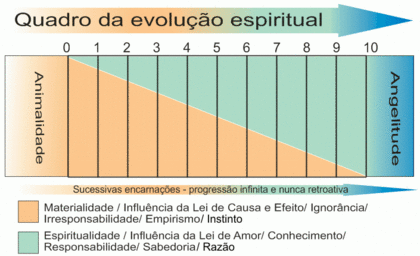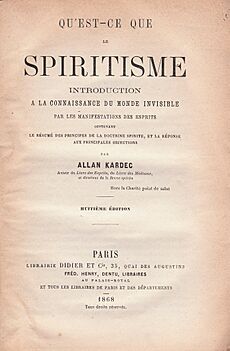Kardecist spiritism facts for kids
Spiritism or Kardecism is a reincarnationist and spiritualist doctrine established in France in the mid-19th century by writer and educator Hippolyte Léon Denizard Rivail (a.k.a. Allan Kardec). Kardec considered his doctrine to derive from a Christian perspective. He described a cycle by which a spirit supposedly returns to material existence after the death of the old body in which it dwelled, as well as the evolution it undergoes during this process. Kardecism emerged as a new religious movement in tandem with spiritualism, the notions and practices associated with spiritual communication disseminated throughout North America and Europe since the 1850s.
Kardec coined the term spiritism in 1857 and defined it as "the doctrine founded on the existence, manifestations, and teachings of spirits". Kardec claimed that spiritism combines scientific, philosophical, and religious aspects of the tangible universe and what he described as the universe beyond transcendence. After observing table-turning, a kind of seance, he was intrigued that the tables seemed to move despite lacking muscles and that the tables seemed to provide answers without having a brain, the spiritualist claims being "It is not the table that thinks! It is us, the souls of the men who have lived on Earth." Kardec also focused his attention on a variety of other paranormal claims such as "incorporation" and mediumship.
Kardecist doctrine is based on five basic works, known as the Spiritist Codification, published between 1857 and 1868. The codification consists of The Spirits' Book, The Mediums' Book, The Gospel According to Spiritism, Heaven and Hell, and The Genesis. Additionally, there are the so-called complementary works, such as What is Spiritism?, Spiritist Review, and Posthumous Works. Its followers consider spiritism a doctrine focused on the moral improvement of humanity and believe in the existence of a single God, the possibility of useful communication with spirits through mediums, and reincarnation as a process of spiritual growth and divine justice.
According to the International Spiritist Council, spiritism is present in 36 countries, with over 13 million followers, being most widespread in Brazil, where it has approximately 3.8 million followers, according to the data from the Brazilian Institute of Geography and Statistics, and over 30 million sympathizers, according to the Brazilian Spiritist Federation. Spiritists are also known for influencing and promoting a movement of social assistance and philanthropy. The doctrine has had a strong influence on various other religious currents, such as Santería, Umbanda, and the New Age movements.
Contents
Definition
The term spiritisme was created by the French educator Hippolyte Léon Denizard Rivail (known as Allan Kardec) to specifically name the body of ideas systematized by him in The Spirits' Book (1857).
To designate new things, new terms are needed. This is required by the clarity of language in order to avoid the confusion inherent in the variety of meanings of the same words. The words spiritual, spiritualist, spiritualism have a well-defined meaning. To give them another meaning, to apply them to the doctrine of Spirits, would be to multiply the already numerous causes of amphibology. (...) Whoever believes to have something within themselves beyond matter, is a spiritualist. However, it does not follow that they believe in the existence of Spirits or in their communications with the visible world. Instead of using the words spiritual, spiritualism, we employ, to indicate the belief we have just referred to, the terms Spiritist and Spiritism, whose form recalls the origin and the radical sense and which, for that reason, have the advantage of being perfectly intelligible, leaving to the word spiritualism its own meaning.
However, the use of the term, whose root is common to various Western nations of Latin origin or Anglo-Saxon, quickly led to its incorporation into everyday usage to designate everything related to the alleged communication with spirits. Thus, today the term spiritism refers to various religious and philosophical doctrines that assert the survival of spirits after the death of the body, and primarily in the possibility of communicating with them, either casually or deliberately, through evocations or spontaneously.
The term Kardecism is repudiated by some followers of the doctrine who reserve the word spiritism solely for the doctrine as codified by Kardec, affirming that there are no different branches within spiritism, and they refer to believers of various currents as spiritualists. These followers believe that spiritism, as a doctrinal body, is singular, making the use of the term Kardecist spiritism redundant. Thus, those who adhere to the teachings codified by Kardec in the basic works (with varying degrees of tolerance for concepts that are not strictly doctrinal, such as apometry) simply identify themselves as spiritists, without the addition of Kardecist. The works themselves disapprove of the use of other expressions like Kardecist, stating that the codified teachings, in their essence, are not linked to the unique figure of a man, as is the case with Christianity or Buddhism, but rather to a collective of spirits whom they believe manifested themselves through various mediums at that historical moment and were expected to continue communicating, thus keeping the doctrinal body in a constant evolutionary process. However, another portion of followers considers the use of the term Kardecism appropriate.
These expressions emerged from the need of some to distinguish spiritism (as originally defined by Kardec) from Afro-Brazilian religions such as Umbanda. The latter, discriminated against and persecuted at various times in Brazilian history, began to identify themselves as spiritists (at one point with the support of the Brazilian Spiritist Federation), in an effort to legitimize and consolidate the religious movement, due to the existing proximity between certain concepts and practices of it and Kardec's spiritism.
Qualification as a science
Alexander Moreira de Almeida still attempts this legitimation, even calling Kardec's approach "revolutionary." However, the current scientific consensus considers parapsychology a pseudoscience, disregarding the alleged paranormal phenomena that underpin spiritism, such as mediumship, reincarnation, obsession, table-turning, séances, automatic writing, spiritualist art, and typology.
Qualification as Christian
Kardec taught that "the teaching of the Spirits is eminently Christian." In Posthumous Works, it is stated that Spiritism is "the only truly Christian tradition." Spiritist writers such as José Reis Chaves and Severino Celestino da Silva also claim that reincarnation was part of early Christianity until it was condemned by the Second Council of Constantinople. This controversial thesis was popularized even earlier by Leslie Weatherhead but has also been questioned based on statements from the Church Fathers and the lack of references to reincarnation during that Council. Agnostic scholar Bart D. Ehrman claims that evidence that early Christians believed in reincarnation is scant. Christian theologian Norman Geisler claims that there is no evidence of reincarnation in the Bible. According to him, the famous text in John 9:2–3 reflects the rabbinic belief in prenatal sins, according to which a fetus could commit sin before birth, but not in a previous incarnation. He also dismisses other texts generally cited in support of reincarnation.
The qualification of Spiritism itself as Christian has also generated controversy. Dr. Antônio Flávio Pierucci, professor at the Department of Sociology at the University of São Paulo (USP) and scholar of Brazilian religiosity, is one of those who affirm that Spiritism is "not a Christian religion." There are no historical Christian doctrines within Spiritism, present in its main branches, such as the Trinity, the physical resurrection of Jesus, the inspiration of the Bible, and redemption. Due to these differences, many scholars consider it a form of neo-Christianity. However, Spiritist writers argue that Spiritism is Christian because it promotes the teaching of loving one's neighbor.
History
Early observations

According to followers and sympathizers of Spiritist doctrine, mediumistic phenomena is universal and has always existed, including abundant accounts in the Bible. Among others, Spiritists cite biblical mediumistic examples, such as Moses' prohibition of "consulting the dead", which would be evidence of the Jewish belief in this possibility, since something unrealizable is not prohibited; the consultation of Saul, the first king of the ancient Kingdom of Israel, with the Witch of Endor, in 1 Samuel 28, who sees and hears the disembodied spirit of Samuel, the last of the judges of Israel and the first of the prophets recorded in the history of his people; and the communication of Jesus with Moses and Elijah on Mount Tabor in the Transfiguration of Jesus ().
Ancient philosophy also provides examples: in Plato's Dialogues, he speaks about the daimon or genius that accompanied Socrates.
Many Spiritists adopt March 31, 1848 (the beginning of the mediumistic events at the residence of the Fox sisters in Hydesville, US) as the initial milestone of modern mediumistic manifestations, allegedly more ostensive and frequent than ever before, which led many researchers to delve into such phenomena.
Allan Kardec
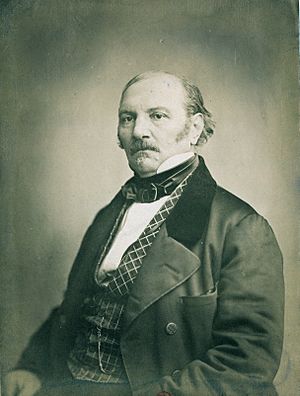
During the 19th century, there was a great wave of manifestations of mediumship in the United States and Europe. These manifestations consisted mainly of strange noises, knocks on furniture, and objects that moved or floated without any apparent cause, as in the case of "table-turning". The supposed case of the Fox sisters in the United States stood out in the late 1840s.
The true Spiritist is not the one who believes in the manifestations, but the one who benefits from the teachings given by the Spirits. Belief is of no use if it does not make one take a step forward on the path of progress and make one better towards their neighbor.
Regarding his background, Kardec was a disciple of Pestalozzi and a member of various academic societies. His main intention as a Spiritist was to provide some support to human spirituality at a time when science was advancing rapidly and religions were losing more and more followers. Kardec believed he had found a new way of thinking about reality that would bring together, in a balanced way, the rising science and the declining religion. He analyzed accounts of numerous mediumistic occurrences spread throughout Europe and the United States, unifying the information he interpreted in order to codify this type of practice and the teachings transmitted.
Let us prove to them that, thanks to the teachings of those they call demons, we understand the sublime morality of the Gospel, which is summed up in the love of God and our fellow men, and in universal charity. Let us embrace all of humanity, without distinction of worship, race, origin, and, even more so, family, wealth, and social status. Let them know that our God, the God of the Spiritists, is not a cruel and vengeful tyrant who punishes a moment of folly with eternal torments, but a good and merciful father who watches over his wayward children with constant solicitude, seeking to draw them to himself through a series of tests designed to cleanse them of all impurities.
Table-turning
The first manifestations of table-turning observed by Kardec involved tables lifting and knocking, using one of their legs, a determined number of knocks to respond yes or no, as agreed upon, to a proposed question.
Despite the belief that supposed spirits or geniuses were moving the tables, Michael Faraday's scientific experiments published in 1853 showed that the movements were caused by the ideomotor effect and dismissed paranormal explanations for the phenomenon of table-turning. The ideomotor effect also causes the movements observed in the so-called ouija board and the "cup game", in which participants involuntarily move markers over letters and numbers and also attribute the movements to supposed spirits or geniuses.
Analyzing these phenomena, Kardec concluded that there was nothing convincing about this method for skeptics because they could believe it to be an effect of electricity, whose properties were little known to the science of that time. Methods were then used to obtain more elaborate responses through the letters of the alphabet: the table knocking a certain number of times would correspond to the sequential number of each letter, thus forming words and sentences in response to the proposed questions. Kardec concluded that the precision of the answers and their correlation with the questions could not be attributed to chance. He also questioned the possibility of a muscular hypothesis (such as the ideomotor effect) being the cause of all the alleged movements and messages of the table-turning or other mechanical productions. The mysterious being who responded in this way, when questioned about its nature, declared that it was a spirit or genius, gave its name, and provided various information about itself. Eventually, the phenomenon decreased in popularity and became anecdotal.
Victor Hugo, during his exile on the island of Jersey (1851–1855), participated in numerous table-turning sessions with his friend Auguste Vacquerie and came to believe that he had made contact with deceased spirits, including his daughter Léopoldine (who had died) and great writers such as Shakespeare, Dante, Racine, and Molière. Faced with experiences with table-turning, Hugo converted to spiritualism, and in 1867 called for science to pay attention to and take seriously the phenomena of table-turning.
Beliefs
Principles
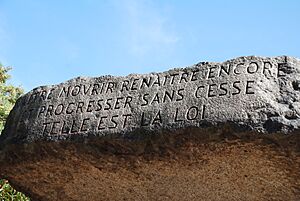
Founded on April 18, 1857, with the publication of The Spirits' Book, Spiritism was structured based on alleged dialogues established with disembodied spirits that, by manifesting through mediums, expounded on scientific, religious, and philosophical topics from the perspective of Christian morality, that is, with the principle of love for one's neighbor, bringing to light new perspectives on various subjects of great philosophical and theological relevance. Thus, one of the basic precepts of Spiritism was established, which is the importance of charity, (Motto: Outside of charity, there is no salvation), understood as benevolence towards all, indulgence towards the imperfections of others, and forgiveness of offenses.
The Spiritist doctrine aims to establish a dialogue between science, philosophy, and religion, with the goal of obtaining an original form that is both more comprehensive and profound, in order to better understand reality. Kardec synthesizes the concept with the famous phrase: "Unshakable faith is only the one that can confront reason face to face in all epochs of humanity."
According to the Spiritist philosopher Herculano Pires, "Spiritist Philosophy, as Kardec said, generically belongs to what we usually call Spiritualist Philosophy because its view of the Universe is not limited to Matter but extends to Spirit, which it considers as the cause of everything we perceive in the material plane. Embracing in its cosmological interpretation Spiritist Science and resulting in Spiritist Religion, Spiritist Philosophy encompasses the entire doctrine."
Main foundations
The Spiritist doctrine, in general, is based on the following points (principles):
- Existence and unity of God, rejecting the dogma of the Holy Trinity (As stated in the first question of The Spirits' Book - "God is the supreme intelligence, the primary cause of all things.");
- The universe is God's creation, including all rational beings (Jesus, for example) and irrational, animated and inanimate, material and immaterial, which, in turn, are all destined for the law of progress;
- Existence and immortality of the spirit, understood as an intelligent individuality of divine creation that acts on matter through a "semimaterial" connection called perispirit, and, like the spirit, is indestructible;
- Spirit's return to matter (reincarnation), as many times as necessary, as the natural mechanism to achieve material and moral improvement. However, for the doctrine, the perfection that humanity is capable of achieving is relative, as only God possesses absolute perfection, infinite in all things. Spiritists reject belief in metempsychosis;
- Concept of the "equal creation" of all spirits, "simple and ignorant" in their origin, and invariably destined for perfection, with identical aptitudes for good or evil, given free will;
- Possibility of communication between incarnate (living) spirits and discarnate (dead) spirits, through mediumship (also known as communicability of spirits). This communication is carried out with the assistance of individuals with certain abilities - mediums - for example, via automatic writing (psychography);
- Law of cause and effect, understood as a mechanism of universal ethical retribution for all spirits, according to which one's current condition is the result of one's past actions, and one's thoughts, words, and actions construct one's future on a daily basis ("One who sows good reaps good. One who sows evil reaps evil");
- Plurality of inhabited material worlds: Earth is not the only planet with intelligent life in the universe, and reincarnation on other planets is possible;
- Jesus, created by God, is the guide and model for all of humanity. According to Spiritism, Christian morality contained in the canonical gospels is the greatest ethical-moral guide that mankind possesses, and its practice is the solution to all human problems and the objective to be attained by humanity.
- Outside of charity, there is no salvation. According to Spiritism, charity consists of benevolence towards all, indulgence towards the imperfections of others, and forgiveness of offenses.
Additionally, secondary characteristics can be mentioned:
- The notion of individual responsibility's continuity throughout the spirit's existence;
- Progressiveness of the spiritual principle within the evolutionary process at all levels of nature;
- Total absence of a priestly hierarchy;
- Selflessness in the practice of good, meaning that one should not demand payment for charitable acts, nor should one do them with ulterior motives. All Spiritist practice is free, as guided by the moral principle of the gospel: "Freely you have received; freely give";
- Use of specific terminology and concepts, such as perispirit, mediumship, and Spiritist center;
- Complete absence of exorcism, formulas, sacramental words, horoscopes, cartomancy, pyramids, crystals, amulets, talismans, worship or offering to images or altars, dances, processions, or similar acts, vestments, andors, incense, and smoke, external practices, or any material signs;
- Absence of institutionalized rituals, such as baptism, worship, or ceremony to officiate marriage;
- Encouragement of respect for all religions and opinions;
- Having reasoned faith, rejecting blind faith that does not employ logical reasoning in its beliefs.
Symbolism
Spiritism does not have an official symbol and prioritizes a denotative language. However, the vine branch depicted in The Spirits' Book – the only engraving used by Kardec in the Spiritist Codification – is considered by the doctrine as the perfect metaphorical image of the relationship between the spirit and the human body, due to this passage:
You shall place at the head of the book the vine branch that we have drawn for you, for it is the emblem of the work of the Creator. All the material principles that can best represent the body and the spirit are contained in it. The body is the vine branch, the spirit is the liquor, the soul or the spirit linked to matter is the grape. Man refines the spirit through work, and you know that it is only through the work of the body that the Spirit acquires knowledge.
Works
Basic works
Below are some of the main works published by Allan Kardec:
The work The Spirits' Book was published in 1857 and contains the fundamental principles of Spiritist Doctrine. The Mediums' Book, or Guide for Mediums and Invokers, was published in 1861 and discusses the experimental and investigative nature of Spiritism, seen as a theoretical and methodological tool to understand a "new order of phenomena" that had never been considered by scientific knowledge: the so-called spiritist or mediumistic phenomena, which were believed to be caused by the intervention of spirits in physical reality.
The book The Gospel According to Spiritism, published in 1864, evaluates the canonical gospels from the perspective of Spiritist Doctrine, addressing the application of Christian moral principles and religious matters such as the practice of worship, prayer, and charity with special attention.
The work Heaven and Hell, or Divine Justice According to Spiritism, was published in 1865 and consists of two parts: in the first part, Kardec critically examines philosophical contradictions and inconsistencies with scientific knowledge, which he believes can be overcome through Spiritist paradigm of reasoned faith. Topics covered include: causes of the fear of death, why Spiritists do not fear death, heaven, the Christian hell imitated from the pagan one, limbo, purgatory, doctrine of eternal punishments, penal code of the afterlife, angels, the origin of the belief in demons. The second part contains dozens of dialogues that purportedly took place between Kardec and various spirits, in which they recount their impressions from the afterlife.
The book The Genesis According to Spiritism, published in 1868, addresses various philosophical and scientific questions, such as the creation of the universe, the formation of worlds, the emergence of the spirit, and the nature of so-called miracles, according to the Spiritist paradigm of understanding reality.
Complementary works
The book What Is Spiritism?, published in 1859, serves as an introductory and didactic work on Spiritism.
The periodical Revue Spirite (in Portuguese, Spiritist Review), dedicated exclusively to Spiritism-related topics, was founded by Kardec and directed by him until his death in 1869. It has had the participation of several prominent figures in the doctrine and is currently published quarterly.
The work Posthumous Works, published posthumously in January 1890 by the directors of the Parisian Society of Spiritist Studies, is a compilation of unpublished writings by Kardec, with annotations about the behind-the-scenes of the creation of the doctrine, aiding its understanding.
Relationship with other segments of society
Science
Scientific method and "spiritual science"
The scientific investigation of the facts and causes of alleged mediumistic phenomena is the subject of intense study, mainly within the pseudoscience of parapsychology. Scientific investigations on mediumship and other "spiritual phenomena" advocated by Spiritism have taken place/take place even within the academic setting, but although many scientists, including renowned ones, have claimed to have provided evidence for the existence of such phenomena in their research through the scientific method, the existence of spirits is neither established nor proven.
Mediumship has been studied by scientists and scholars for more than a century.
Many scientists and intellectuals have dedicated themselves to investigations of mediumship and its implications for the mind–body relationship, including: Kardec, Alfred Russel Wallace, Alexandre Aksakof, Cesare Lombroso, Camille Flammarion, Carl Jung, Charles Richet, Gabriel Delanne, Frederic Myers, Hans Eysenck, Henri Bergson, Ian Stevenson, J. J. Thomson, J. B. Rhine, James H. Hyslop, Johann K. F. Zöllner, Lord Rayleigh, Marie Curie, Oliver Lodge, Pierre Curie, Pierre Janet, Théodore Flournoy, William Crookes, William James, and William McDougall.
Medicine

The relationship between Spiritism itself and medicine is profound, as evidenced by its presence in many spiritist books and the existence of the International Spiritist Medical Association, which brings together medical-spiritist associations from various countries. Spiritism constitutes a vast international movement of charity and healthcare institutions, as evidenced mainly by the existence of such associations, numerous hospitals and spiritist centers, and a notable promotion of psychiatry and homeopathy.
Dr. Adolfo Bezerra de Menezes, a spiritist and physician, wrote the classic book A Loucura sob Novo Prisma (Insanity from a New Perspective), seeking to relate the issue of mental disorders to Spiritism and promote the application of more effective treatment methods in the field of mental health.
Currently, psychiatrist and parapsychologist Alexander Moreira-Almeida, coordinator of the "Section on Spirituality, Religiosity, and Psychiatry" of the World Psychiatric Association, is one of the leading figures in the scientific study of the relationship between health and spiritual experiences, especially mediumship.
Other religions
There is no consensus among Spiritists as to whether Spiritism is a religion or not, despite the doctrine being classified as a religion in demographic surveys. This is due to the triple aspect of Spiritism, which allows it to be classified as a doctrine that aligns "science-philosophy-religion". In the preamble of the book O Que É o Espiritismo? (What is Spiritism?), Kardec states that "Spiritism is, at the same time, a science of observation and a philosophical doctrine. As a practical science, it consists of the relations established between us and the Spirits; as a philosophy, it encompasses all the moral consequences that emanate from these same relations." Some still contest the religious aspect of Spiritism; however, in the book published by its codifier, titled O Espiritismo na sua mais simples expressão (Spiritism in its simplest expression), he clearly asserts: "From a religious point of view, Spiritism is based on the fundamental truths of all religions: God, the soul, immortality, rewards and punishments in the afterlife, but it is independent of any particular cult. Its goal is to prove to those who deny or doubt that the soul exists, that it survives the body, and that it experiences, after death, the consequences of the good and evil deeds committed during corporeal life: the goal of all religions." Kardec also clarifies that Spiritism is a religion in the Opening Address of the Annual Commemorative Session of the Day of the Dead (Society of Paris, November 1, 1868), where he states:
If that is the case, you may ask, is Spiritism a religion? Well, yes, undoubtedly, gentlemen! In the philosophical sense, Spiritism is a religion, and we take pride in it because it is the doctrine that establishes the bonds of fraternity and communion of thoughts, not on a mere convention, but on more solid foundations: the very laws of Nature.
At the International Spiritist Congress held in Paris in 1925, there was a proposal to remove the religious aspect from Spiritism, but the important French Spiritist philosopher Léon Denis opposed it with tenacity, even in his already weak physical condition of health. According to Denis, Spiritism was not the "religion of the future" but rather the "future of religions".
On the other hand, the Spiritist Doctrine affirms respect for all religions and doctrines, values all efforts for the practice of good, and claims to work for fraternity and peace among all peoples and all men, although it firmly rejects, it must be reiterated, fundamental dogmas of other monotheistic religions. In the case of Christianity, the fundamental dogmas that stand out are the divinity of Christ, the Holy Trinity, salvation or justification by grace (more than by individual works or efforts), and the existence and importance of the Church as a spiritual entity, not just human.
Christianity
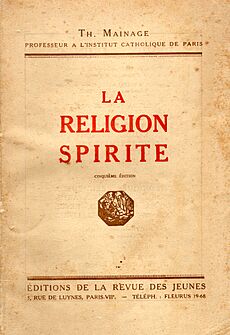
The Spiritist doctrine adopts Christian morality despite its differentiated theological conceptions. According to Spiritists, the name given to the followers of Spiritism, Jesus Christ is the most elevated spirit to have ever incarnated on Earth.
Spiritists (a widely used translation during the early decades of the 20th century for the French neologism spirite) consider themselves Christians and attribute to Spiritist doctrine the character of a Christian doctrine since they consider themselves followers of the moral teachings of Jesus. Spiritists base their defense of the Christian character of Spiritist doctrine on the fact that Allan Kardec argued that Christian morality, free from the dogmas of faith associated with it, would be the closest thing to a divine and rational code of ethics that humans possess. Spiritists argue that the dogmas were elaborated over the centuries by the Catholic Church and therefore it is not necessary to follow them to be a Christian. Furthermore, item 625 of The Spirits' Book states that Jesus is the greatest moral example available to humanity, although Spiritism denies any genuinely divine nature to him.
Sermon on the Mount
The Beatitudes are nine teachings that Jesus delivered in the Sermon on the Mount, according to the New Testament (). For Spiritism, these teachings are of great importance, and they will now be presented from the Spiritist perspective.
. According to Spiritism, Jesus promises the kingdom of heaven to the simple and humble, referring to the moral qualities of the individual.
. According to Spiritism, only in the afterlife can the compensations that Jesus promises to the afflicted on Earth be fulfilled. Faith in the future can console and instill patience in the spirit that endures the various terrestrial anomalies with calmness and resignation. However, it does not justify the causes of the diversity of evils, inequalities between vice and virtue, deformities, and natural disasters. The vicissitudes of life can be divided into two parts according to the Spiritist perspective: some have their explanations in the present life, while others are found outside of this life. This latter cause, in the Spiritist view, is explained by the plurality of existences in which the incarnated spirit pays for the evils it has committed in previous lives.
The purity of the heart resembles the principle of simplicity and humility, excluding all ideas of pride and selfishness. According to Spiritism, the emblem of purity that Jesus takes in relation to children should not be taken literally, "Then they brought little children to Him, that He might touch them; but the disciples rebuked those who brought them. But when Jesus saw it, He was greatly displeased and said to them, 'Let the little children come to Me, and do not forbid them; for of such is the kingdom of God. Assuredly, I say to you, whoever does not receive the kingdom of God as a little child will by no means enter it'" (Mark 10:13-15). The spirit of the child, not yet able to manifest its tendencies towards evil, represents momentarily the image of innocence and purity resembling pure spirits. However, the actions [good or bad] taken by the spirit before incarnating gradually reflect in its behavior as an incarnated spirit. Therefore, as the incarnated spirit develops its physical structure, it also develops its psychic structure, which exhibits behavioral characteristics corresponding to the real conduct of the spirit itself.
. According to Spiritism, Jesus makes meekness, moderation, gentleness, affability, and patience a law.
Mercy consists of forgiving offenses, and for Spiritism, the sacrifice that pleases God the most is reconciliation with adversaries, as stated in Matthew 5:23-24.
According to Spiritism, all Christian morality is summarized in this axiom:
Outside of charity, there is no salvation.
Organizations
Brazilian Spiritist Federation

The Brazilian Spiritist Federation is a public utility entity founded on January 2, 1884, in Rio de Janeiro. It is a civil, religious, educational, cultural, and philanthropic society whose purpose is the study, practice, and dissemination of Spiritism in all its aspects, based on the works of Allan Kardec's Codification and the canonical Gospels.
International Spiritist Council
The International Spiritist Council (ISC) is an organization resulting from the union of representative associations of national Spiritist movements and currently has 35 associated countries. It was constituted on November 28, 1992, in Madrid, Spain. Its objectives are the promotion of fraternal union among Spiritist institutions in all countries and the unification of the worldwide Spiritist movement; the promotion of the study and dissemination of Spiritist Doctrine in its three basic aspects: scientific, philosophical, and religious; and the promotion of the practice of material and moral charity as taught by Spiritist Doctrine. The main event organized by the ISC is the World Spiritist Congress, held every three years.
Pan-American Spiritist Confederation
The Pan-American Spiritist Confederation, founded on October 5, 1946, in Argentina, is an international institution that mainly brings together Spiritists from Latin America. CEPA has adherent and affiliated institutions in various countries and defends a secular view of Spiritism. The organization takes controversial positions among Spiritists, such as the dissociation between the doctrine and Christianity and the need to update Spiritism in light of science. Since October 13, 2000, the headquarters of CEPA has been in Porto Alegre, Rio Grande do Sul. CEPA's activities in Brazil are primarily carried out through events promoted by adherent institutions, such as the Forum of Free Thinking Spiritists and the Brazilian Symposium on Spiritist Thought.
Demographics

From 1857, the year of the release of The Spirits' Book, to 1869, the year of Kardec's death, Spiritism gained 7 million followers. According to data from 2005, Spiritism has about 13 million followers worldwide, and according to data from 2010, Brazil – the country with the most followers – has about 3.8 million Spiritists. The International Spiritist Council (CEI) has 36 member countries. Another international Spiritist organization, the Pan American Spiritist Confederation, brings together Spiritist institutions and delegates from 13 countries.
Brazil

Spiritism arrived in Brazil in 1865 according to the Brazilian Spiritist Federation (FEB), although there are differing opinions on this matter. as reported below:
Although since 1853 the country's newspapers already reported family gatherings for the production of phenomenons of mediumship, the Spiritism codified by Allan Kardec only arrived in Brazil around 1860 with the first copies of The Spirits' Book. It was in the year 1860 that the first Spiritist book published in Brazil appeared: Os Tempos são chegados ("The Times Have Come"), by French professor Casimir Lieutuad, a pioneering work that paved the way for the introduction of Spiritism in Brazil.
Through Bezerra de Menezes and Chico Xavier, Spiritism had the opportunity to become popular throughout the country, spreading its teachings across a large part of the Brazilian territory. Brazil is the country with the largest number of Spiritists worldwide. However, in the 19th century, the penal code of 1890 even banned the practice of Spiritism in Brazil and punished those who practiced the "crime" with up to 6 months in prison. Although socially tolerated, especially after the actions of the Brazilian Spiritist Federation (FEB) in the first decades of the 20th century, the practice ceased to be officially prohibited only with the promulgation of the penal code of 1940. The FEB congregates approximately ten thousand Spiritist institutions, spread across all regions of the country. There are also several Brazilian Spiritist associations for specific professions, such as the Brazilian Medical-Spiritist Association, Brazilian Association of Spiritist Psychologists, Brazilian Association of Spiritist Judges, Brazilian Association of Spiritist Artists, and Crusade of Spiritist Military.
According to the Brazilian Census of 2010, Brazil had about 3.8 million Spiritists. The state capitals with the highest percentage of Spiritists are Florianópolis (7.3%), Porto Alegre (7.1%), Rio de Janeiro (5.9%), São Paulo (4.7%), Goiânia (4.3%), Belo Horizonte (4.0%), Campo Grande (3.6%), Recife (3.6%), Brasília (3.5%), and Cuiabá (3.5%). The IBGE considers the terms kardecism and Spiritism as equivalents in its census classification.
As the third-largest religious group in Brazil, Spiritists also have the highest income and education levels among social segments, according to data from the same Census. Spiritists are strongly associated with acts of charity. They maintain asylums, orphanages, schools for the underprivileged, daycares, and other institutions for assistance and social promotion in all Brazilian states. Allan Kardec is a well-known and respected figure in Brazil. He is the most read French author in the country, with his books selling more than 25 million copies throughout the Brazilian territory. If we count other Spiritist books, all derived from the works of Kardec, the Brazilian Spiritist publishing market surpasses 4,000 titles already published and over 100 million copies sold. The Spiritist theme constitutes the most successful literary market in Brazil, with Spiritist books leading the bestseller lists in the country's main bookstores. According to the 2010 census, Spiritism experienced significant growth from 2000 to 2010, with an increase of over 60% in followers, going from 2.3 million to 3.8 million followers, with the majority of them being between 50 and 59 years old (3.1%) and having the highest literacy rate (98.6%), the highest percentage of individuals with a completed university education (31.5%), and income above 5 minimum wages (19.7%), as well as the lowest percentage of individuals with no education (1.8%) and with incomplete primary education (15.0%).
Cuba
After the legalization of religion in Cuba, there was a revival of Spiritism, which had been present in the Caribbean country since the 19th century. According to data from the Ministry of Religions, in 2011, there were 400 Spiritist centers in Cuba, with an additional 200 being registered, making Cuba the second most Spiritist country in the world in terms of the number of centers. The Cuban Medical-Spiritist Association has the highest number of activists in the International Medical-Spiritist Association.
Spain
In Spain, one of the great pioneers of Spiritism was Luis Francisco Benítez de Lugo y Benítez de Lugo, VIII Marquis of Flórida and X Lord of Algarrobo y Bormujos, who presented a bill for the official teaching of Spiritism, reading it on August 26, 1873.
Mexico
In the decades of 1850–1860, Spiritism reached Mexico, attracting the intellectual elite with its proposals of modernism, anticlerical reform, and liberalism of free thought. General Refugio Indalecio González translated works by Kardec, publishing El Evangelio Según el Espiritismo in Spanish in 1872 in Mexico and, under the direction of the Sociedad Espírita Central de la República Mexicana, circulated spiritist magazines. Among others, there was also the initial dissemination by utopian socialist Nicolás Pizarro Suárez. In 1875, attention to Spiritism became heated in Mexico City when, in a positivist reaction after publications in the press, a debate was held between materialist and spiritualist students at the Liceo Hidalgo and Teatro del Conservatorio, considered by Zenia Yébenes Escardó as "the first philosophical controversy that was considered as such in Mexico." In addition to its academic presence, popular Spiritism emerged, incorporating indigenous practices and local cults, with a strongly present folkloric imagery in the figure of Teresa Urrea, a spiritual healer who was supported by the spiritist Lauro Aguirre. The feminist Laureana Wright, an already renowned writer, converted to Spiritism in 1889 to promote the debate of thought and women's equality, inspired by examples of female emancipation that she observed in other countries, and started holding sessions attended by various public figures, later becoming the president of the Sociedad Espírita Central. Spiritist groups emerged in various locations, and after a brief decline at the end of the 19th century, attention on Spiritism intensified in the early 20th century through press coverage after Francisco Madero, who promoted it through works he distributed, organized congresses, and, inspired by allegedly psychographed letters, published a book that promoted the Mexican Revolution, becoming the president of Mexico for a short period until he was assassinated.
See also
 In Spanish: Espiritismo para niños
In Spanish: Espiritismo para niños
- Automatic writing
- Dowsing
- Mediumship
- Ouija
- Spiritualism
- List of Spiritualist organizations, spiritualists (Fox sister followers) not spiritists (Kardec followers)
- Chico Xavier



